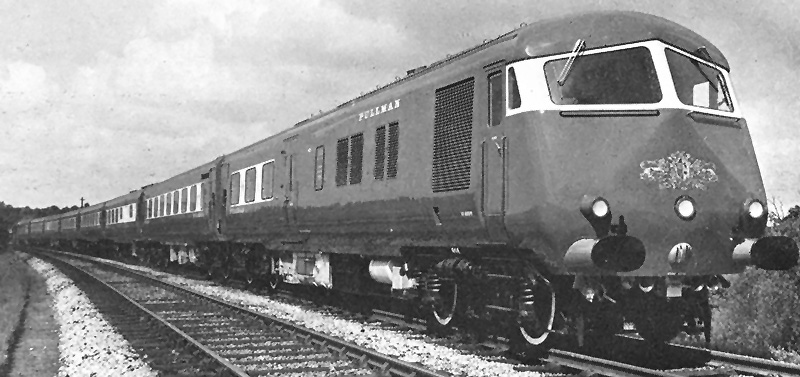Blue Pullman
Introduced: 1960
Body: 65 ½ft & 66 ½ft
Engine: NBL/MAN 1000hp
Transmission: Electric
Lot Numbers: 30553-8
Diagrams: BR 653/4 662/3/4 673
Maximum Speed: 90mph

The Blue Pullman story is as intriguing as the units themselves. Without a doubt the most luxurious DMUs* to run in this country at the time, with many innovative features, it seems that few people actually wanted these trains. Many questioned their usefulness - particularly the amount of usage they would get and level of patronage, and the amount of trains ordered to operate the services. There were also staffing issues that had to be overcome before they could enter traffic.
(*I have included them as DMUs in that they were diesel, of unit formation and later some could worked in multiple, although they obviously aren't DMUs in the normal sense!)
The design of the bogies, the heavy insulation in the bodysides, the suspended flooring in passenger accommodation, the wide air-sealed gangways between cars, and the double glazing was intended to create an isolation from all the fatiguing sensations of unpleasant sound and harsh vibration. Full air-conditioning was used for the first time, with controlled temperature and humidity. Armchair seats were deeply padded with foam rubber and were reclinable in the first class section. Table service included specially selected menus and wine list. A new type of permanent coupling which absorbed both buffing and drawing loads was designed to enable a smooth pick up on starting and stable riding at high speeds, and there was a two-stage brake system giving the ability to stop quickly and safely from maximum speed. The power and transmission set-up was a development of the arrangement used on the SR DEMUs.
Five sets were built, but with only one vehicle type shared between two batches there was very high production costs to offset against their actual useage, and even during construction their time in service was known to be limited particularly on the LMR.
The LMR received two 6-car sets to work just one return service from Manchester to St. Pancras on Monday - Fridays, although when introduced there was also a short-lived fill-in turn. Upon completion of the Euston electrification scheme they moved to the WR to join the three 8-car sets on workings to South Wales, Bristol & Birmingham until 1973.
None were preserved.
Summary
Development
Press run 24/6/60
Press run 7/9/60
Staff difficulties
Ownership agreement
Manufacturer's Publicity
Description
Type 1 - LMR motor car
Type 2 - WR motor car
Type 3 - WR parlour 2nd car
Type 4 - LMR kitchen car
Type 5 - WR kitchen car
Type 6 - LMR/WR parlour 1st car
Interior
Air conditioning
Motor cars
Auxiliary power
Bogies & couplings
Brakes
Data
Sub contractors
Staff instructions
LMR services begin
LMR Publicity
LMR brochure
LMR handbills
Controversy
WR services begin
WR publicity
WR publicity brochure
WR publicity leaflet
LMR Operations
WR Operations
Liveries
Rundown & withdrawal
After service & preservation
Disposal
Maintenance Manuals
Miscellaneous
Acknowledgments & Further Reading
Images
No vehicles were preserved.


